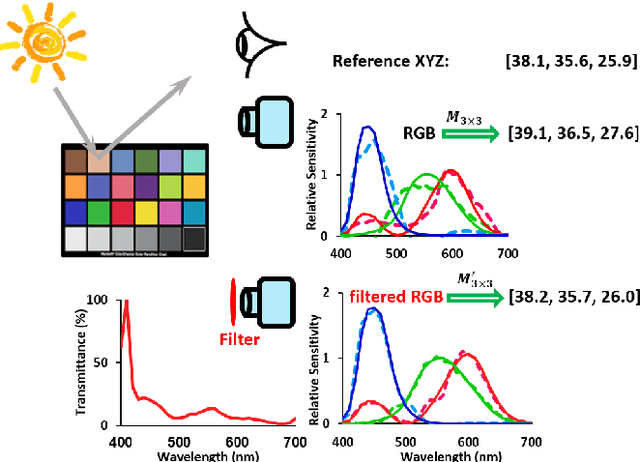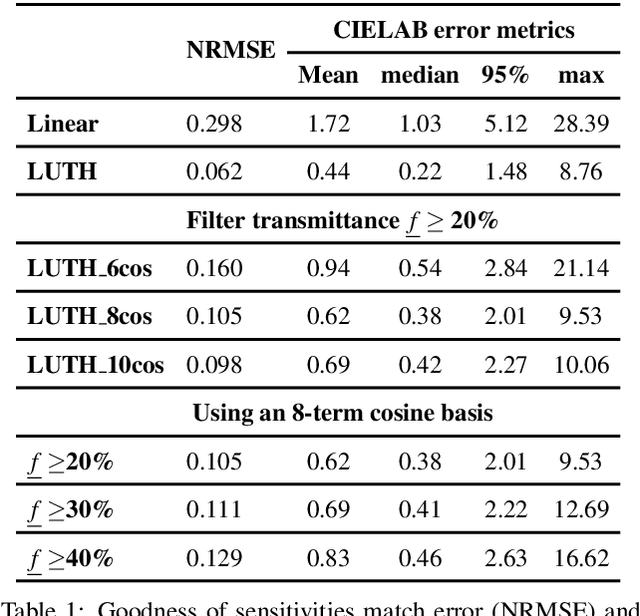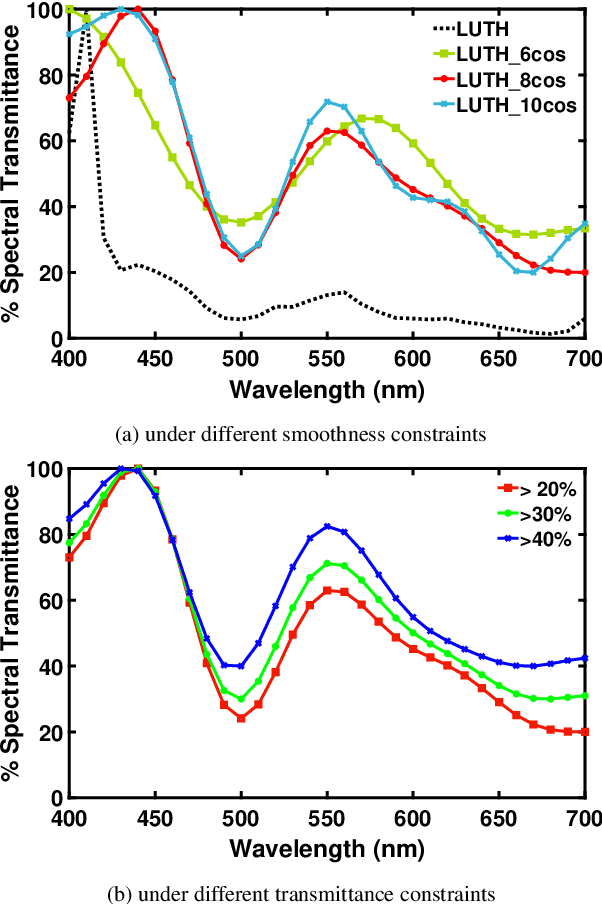Designing a physically-feasible colour filter to make a camera more colorimetric
Paper and Code
Apr 26, 2020


Previously, a method has been developed to find the best colour filter for a given camera which results in the new effective camera sensitivities that best meet the Luther condition. That is, the new sensitivities are approximately linearly related to the XYZ colour matching functions. However, with no constraint, the filter derived from this Luther-condition based optimisation can be rather non-smooth and transmit very little light which are impractical for fabrication. In this paper, we extend the Luther-condition filter optimisation method to allow us to incorporate both the smoothness and transmittance bounds of the recovered filter which are key practical concerns. Experiments demonstrate that we can find physically realisable filters which are smooth and reasonably transmissive with which the effective "camera+filter" becomes significantly more colorimetric.
 Add to Chrome
Add to Chrome Add to Firefox
Add to Firefox Add to Edge
Add to Edge